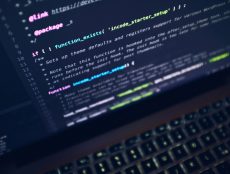
Articles
Op-Ed
Why E-Rate and WiFi Automation Are More Important than Ever for Hybrid Learning
By Roger Sands
October 26, 2020
ELearning has been a major player in schools for the past several years, and E-Rate has been right there alongside it, giving schools options so that every district, no matter its financial status, has access to the technologies that students need to grow and excel. Now, during the current hybrid learning environment, these technologies – and E-Rate – are more important than ever.
A Greater Dependence on Technology
Most schools are starting the 2020-2021 year in a hybrid learning environment. This environment looks different for every school, but a few options we’ve seen include:
-Having an entire class in-person one day, and remote the next;
-Splitting a class between in-person and remote;
-Having an entire class in-person, but splitting the class between multiple rooms for social distancing.
If any students are learning remotely, teachers are dependent on a wireless or wired network to actually teach. If students are in-person, all the traditional eLearning technologies – such as individual tablets and laptops – are in play.
From teachers to students, a reliable WiFi network is paramount for stress-free learning.
A Dynamic Network Depends on WiFi Automation
Most eLearning depends on students using tablets or laptops with internet access. Without a strong and reliable connection, students can’t do what they need to do. For students’ success, it’s critical that the WiFi works flawlessly.
This is complicated by the fact that the network is a dynamic ecosystem that is always changing. As students and teachers move throughout a building with mobile devices, as devices update, and as devices connect and disconnect, the network changes. It is not possible to optimize the network once, and then walk away, confident that it will remain optimized the entire school year. As any IT professional will tell you, that’s a nice dream, but not reality.
https://twitter.com/favsboo/status/1319854670437928960
Reality is that the network must be constantly monitored, and that IT teams must have complete visibility into the entire ecosystem 24/7 if the network is to become and remain optimized, with little to no issues affecting students, teachers, and staff.
The network ecosystem consists of all connected devices, back-end and front-end infrastructure, the entire radio frequency environment, and all software and applications. A reported issue can have its root cause traced back to any one of these areas. Often a “problem with the WiFi” is not directly related to the WiFi. To get the necessary information, IT has to wait for the issue to occur, capture data packets, analyze the data, identify the root cause, and then create and implement a resolution. This is, not surprisingly, time consuming.
The best and most cost-effective alternative to this labor-intensive manual process is to provide 24/7 monitoring and visibility with AI-based WiFi Automation platforms. These platforms combine AI-engines and edge computing to give schools expert-level insight and analytics. With these platforms, IT teams don’t have to spend all their time watching the network or chasing down the root cause of intermittent issues. They can focus on other critical responsibilities, trusting that the platform is monitoring the health and performance of the entire network, and that it will provide automatic alerts if any issues arise.
With these alerts, IT is given notice of the issue as soon as – or sometimes even before – end users are affected, along with the identified root cause. Some platforms will also provide suggested actions for resolution. This provides IT with everything they need to resolve the issue rapidly in real-time, drastically reducing any negative impact on student learning outcomes.
A Dynamic Network Gets Even More Dynamic
While WiFi Automation was becoming popular with schools pre-pandemic, it is even more impactful now. This is because hybrid learning has added levels of complexity to the dynamic nature of the wireless ecosystem.
For example, schools are now seeing a sharp increase in real-time media streaming and video collaboration. As we all know, these technologies demand a well-performing network, or users are forced to suffer through audio delays, frozen screens, and more. If a network wasn’t designed to provide near-constant video-streaming services, it might be showing signs of degradation or stress. The last thing schools need is teachers and students unable to communicate.
We’ve also seen some schools changing spaces like gymnasiums or auditoriums into temporary classrooms. While these spaces typically had WiFi access, network utilization has changed with these new, “pop-up” classrooms. Is the network strong enough in these areas to support eight hours a day of constant use? How does this affect neighboring classrooms?
These real-life questions and others are common as schools adapt to COVID-19 conditions. Making the situations more challenging is the fact that schools don’t know if the plan they have today will still be in place next month. As educational guidelines change, the network must be able to adapt easily and flawlessly, providing optimal service no matter what is asked of it.
E-Rate Supports WiFi Automation, Ending WiFi Worries
In the midst of these demands, IT budgets remain by-and-large the same or reduced. WiFi Automation platforms are the only way to cost-effectively scale IT departments, providing IT and their schools with the best network support possible so that WiFi worries become a thing of the past. In addition to previously mentioned capabilities of 24/7 issue detection and notification, these platforms can also run network tests, detect security breaches, and provide remote support – giving IT the ability to optimize the network from any location.
These platforms should be an integral part of every school’s network plan, and they are available to everyone thanks to E-Rate. Use this program to bring WiFi Automation platforms to your network, supporting network optimization now when it matters most.
Roger Sands is a co-founder and CEO of Wyebot Inc., a leader in WiFi automation.
Featured Image: Thomas Jensen, Unsplash.









One Comment